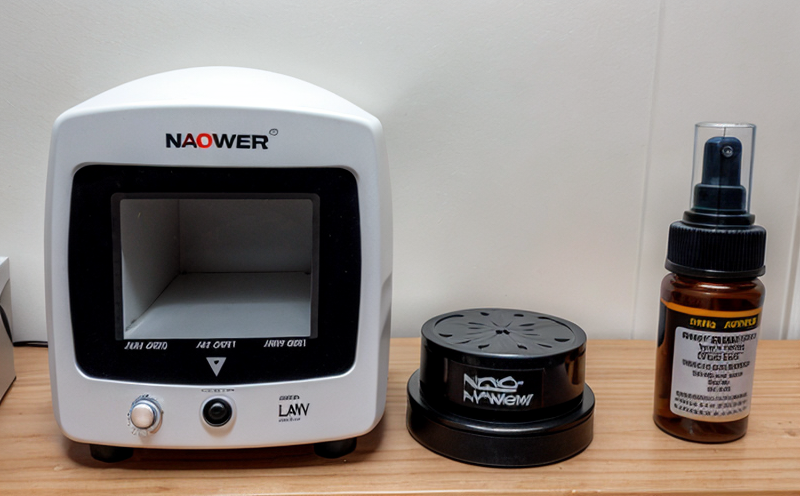EN 13274 Particle Penetration Testing of Filter Materials with Nanoparticles
The European Standard EN 13274 is pivotal in the assessment of filter materials for their ability to withstand nanoparticle penetration. This service ensures that filter materials used in critical applications are robust and reliable, especially when dealing with nanoscale particles that can present unique challenges due to their size and surface properties.
Nanoparticles, defined as having at least one dimension under 100 nanometers, exhibit different physical and chemical properties compared to larger particle counterparts. In filtration systems, these nanoparticles may pose significant risks if they bypass the filter material, leading to potential health hazards or operational inefficiencies. The EN 13274 test method provides a standardized approach to quantify this risk by subjecting filter samples to nanoparticle challenge.
The procedure involves exposing the filter sample to a suspension of nanoparticles and measuring the percentage of particles that penetrate through the filter material. This quantitative assessment helps in selecting appropriate filter materials for specific applications, ensuring compliance with international standards and regulatory requirements.
Key considerations during testing include the choice of nanoparticle size distribution and concentration, the type of filtration medium (e.g., cotton, polypropylene), and the operating conditions such as pressure drop. These parameters are critical in determining the performance of the filter material under real-world conditions.
The EN 13274 standard is applicable to a wide range of industries including pharmaceuticals, electronics, and environmental control systems where high-efficiency filtration is essential. It ensures that the selected filter materials can effectively protect against nanoparticle contamination, thereby enhancing product quality and safety.
Our laboratory adheres strictly to this standard, ensuring accurate and reliable results through rigorous calibration and validation of testing equipment. We employ experienced engineers who are well-versed in handling nanomaterials and interpreting test outcomes within the broader context of filter performance.
The importance of this service cannot be overstated, especially for industries where nanoparticle exposure could lead to significant health risks or operational disruptions. By providing comprehensive testing services based on EN 13274, we help our clients make informed decisions regarding their filtration needs, ultimately contributing to safer and more efficient processes.
Why It Matters
The significance of nanomaterials in various industries cannot be underestimated. From advanced pharmaceuticals to cutting-edge electronics, the use of nanoparticles is rapidly increasing. However, the unique properties of these particles also bring challenges that traditional filtration methods may not address effectively.
- Enhanced efficiency: Nanoparticles are more effective at certain processes due to their large surface area-to-volume ratio.
- Health risks: Exposure to nanoparticle contamination can lead to adverse health effects, necessitating robust filtration systems.
- Environmental impact: Proper filtration of nanoparticles is crucial for preventing environmental pollution and maintaining ecological balance.
In the context of EN 13274 testing, these factors highlight the importance of ensuring that filter materials are capable of withstanding nanoparticle penetration. This not only protects end-users but also supports sustainable manufacturing practices by minimizing waste and contamination.
Our service ensures that your organization complies with international standards, thereby enhancing trustworthiness in your products or services. By leveraging this standardized testing method, you can confidently introduce innovative solutions to the market while ensuring safety and quality.
Applied Standards
| Standard Reference | Description |
|---|---|
| EN 13274:2015 | This European Standard specifies the methods for determining the resistance of filter materials to particle penetration by means of a nanoparticle challenge. |
| ISO/TS 28692-2:2019 | An international technical specification that provides additional guidance on the use and application of EN 13274, particularly in relation to specific types of filters and nanoparticles. |
| Test Parameters | Description |
|---|---|
| Nanoparticle size distribution | Ranges from 10 nm to 50 nm, depending on the application. |
| Filtration medium type | Can include cotton, polypropylene, or other suitable materials as per the standard. |
| Operating pressure drop | Varies based on the specific requirements of the filtration system. |
Benefits
Enhanced product safety and reliability by ensuring that filter materials effectively block nanoparticle contamination.
Compliance with international standards, thereby reducing the risk of non-compliance penalties.
Improved reputation among customers who value quality and safety in their supply chains.
Access to a broader market by demonstrating adherence to stringent testing protocols.
Cost savings through early identification and rectification of potential issues in the filter design process.
Increased confidence among R&D teams working on innovative nanomaterial applications.
By investing in EN 13274 testing, you are not only meeting current regulatory requirements but also future-proofing your products for emerging technologies and markets.





